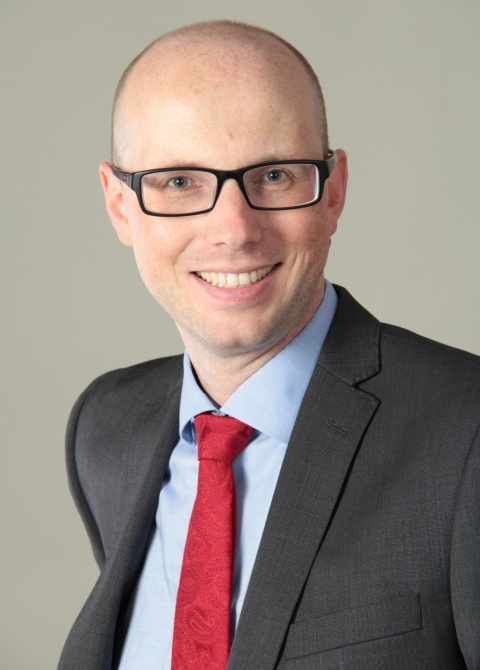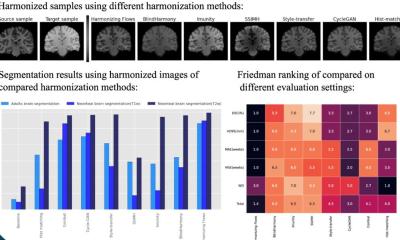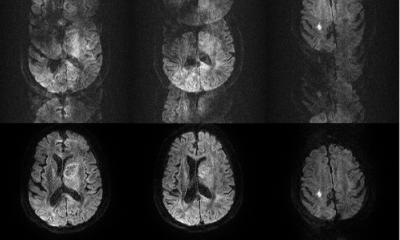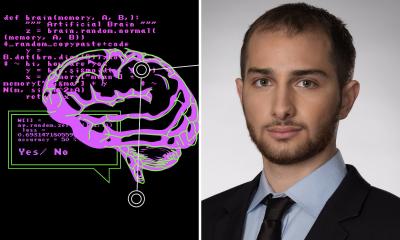Courtesy of Medical University of Vienna
Article • MR Fingerprinting
From qualitative to quantitative imaging
From the beginning of MRI scientists dreamed of not only translating data sets into images, but also classifying tissue directly. Five years ago this would still have been inconceivable.
Report: Karoline Laarmann
However, MR fingerprinting might now make it possible to diagnose a disease from a distinctive combination of information about the tissue. This original technology is being largely driven by Case Western Reserve University and Cleveland University Hospitals, Ohio, with research support from Siemens Healthineers. Reto Merges, Head of Scientific Marketing for the Magnetic Resonance Business Line, discussed the technique and how it could change MRI diagnostics in the future.
Just as each person has a unique fingerprint, each body tissue, whether diseased or healthy, also has an individual, physical pattern. This pattern is encrypted in signals sent by the tissue during an MRI scan. To date, it has only been possible to measure different signal intensities, which are then represented as light/dark contrasts on the MRI image. However, this qualitative and relative measurement alone does not allow for straight forward conclusions as to whether the tissue is healthy or diseased.
However, MR Fingerprinting (MRF) could open up entirely new opportunities for quantitative measurements, explains Reto Merges: ‘This procedure now could make it possible to obtain quantified information about a tissue section without having to consult reference values. With this method we do not record the signal intensities of individual image sequences or weightings that can vary according to the device and data acquisition. Instead, we record the signal evolution from one single pseudo-randomized sequence that contains a multitude of parameters that can be characteristic for a certain type of tissue. These signal evolutions are correlated with simulations in a digital MRF dictionary, similar to a fingerprint, which is fed into a database to find out to which person it belongs.’
Currently this database, developed by researchers at Case Western Reserve University and the University Hospitals, contains simulations for all T-1 and T-2 weightings. The aim is to successively add simulations for other tissue features, such as relative spin density, B0 or diffision. The procedure is already delivering the first promising results, which radiologist Vikas Gulani and physicist Mark Griswold along with their US research team already presented in Nature magazine in 2013, attracting worldwide attention. At the moment the particular focus of clinical trials is on oncological applications for the head, prostate, breast and liver, but also for cardiac examinations and multiple sclerosis.

MRF advantages
The technology is now at a point where we have also been able to trial it in other international centres
Reto Merges
Compared to conventional procedures for quantification MRF has the potential to offer some decisive advantages, Merges confirms. ‘Firstly, the procedure is very fast. The various parameters are not consecutively recorded in different sequences but captured simultaneously. This not only shortens the examination period to just five minutes, but it also makes the procedure more robust. If a patient moves during a conventional MRI examination the entire aquisition sequence that has just been run can lose its diagnostic relevance. With the fingerprinting procedure the signal evolution measured up to that point remains useable.’
The procedure also copes very well with field inhomogeneities; whether or not a signal is a little stronger or weaker is not that important for the general pattern of the signal evolution. A further strength of MRF, along with its speed, is its great consistency. ‘We are currently experimenting with transferring the procedure to different MRI scanners and field strengths,’ Merges explains. ‘The technology is now at a point where we have also been able to trial it in other international centres, such as Essen University Hospital and the Medical University of Vienna from the beginning of this year.


‘Phantom measurements carried out with all of our clinical cooperation partners, have already shown that fingerprinting delivers consistent, comparable results measured on different devices and in different locations. This is an important step towards introducing MRF into clinical imaging. However, we currently cannot say exactly when this will be.’
Profile:
After gaining an electrical engineering and IT degree at Karlsruhe Institute of Technology, Germany, Reto Merges Dipl.-Ing began his career at Siemens, developing segmentation algorithms for coronary artery segmentation on CT data. Based in China for four years, he built up an organisation for research collaboration for the CT division in greater China and South Korea. Within the Magnetic Resonance Business Line, Merges has held various positions in global marketing, which included heading the clinical marketing team, before he was appointed director of scientific marketing in early 2015. In this role he focuses on innovations, education and the future of value-based imaging.
31.08.2016











